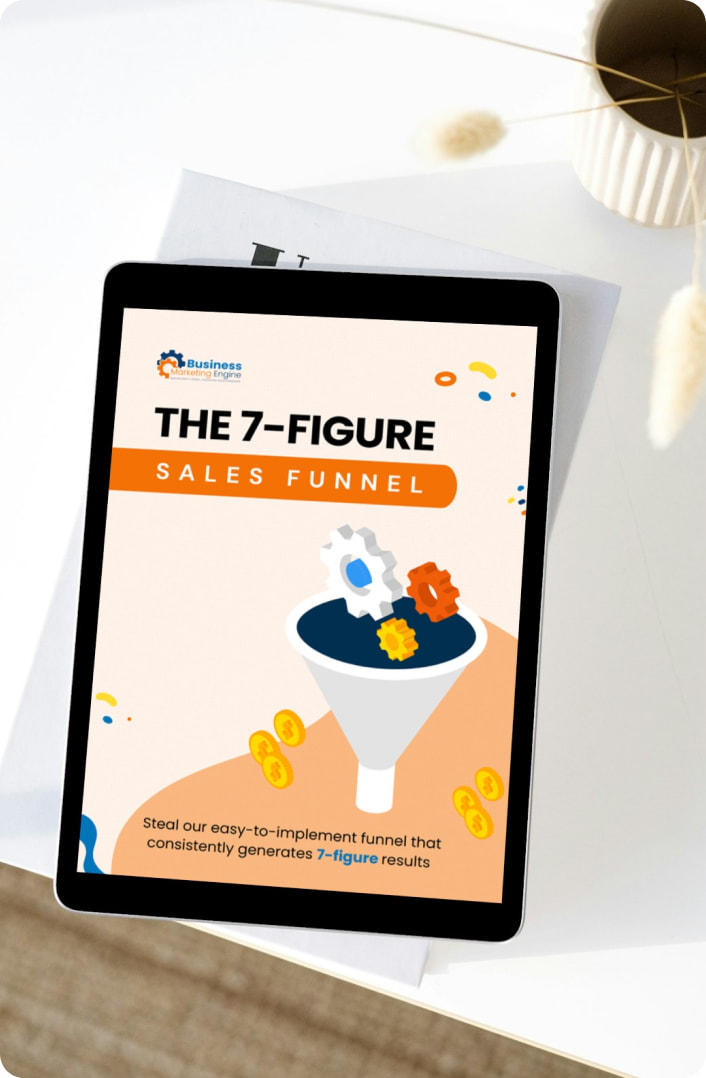Businesses have a lot of marketing expenses. You might be a new small business owner who just realized this. You also might be a longstanding business owner who wants to boost your total revenue.
Either way, a marketing budget tells you how much you can spend on marketing activities.
It’s stressful to see all the numbers that come with your budget. That’s why we are here to help you create a marketing budget plan in 2021.
 What is a Marketing Budget?
What is a Marketing Budget?
How much will your company spend on marketing throughout the year? What about per month?
A marketing budget details, plans for and answers these questions. When you make your budget, you have to ensure that it accounts for all the many marketing costs. These costs include paid advertising, sales team cost, acquisition cost and more.
Your marketing budget should align with your business goals. This allows you to properly distribute your revenue where it needs to go so that your company succeeds.
Why Do You Need a Marketing Budget?
There are almost endless reasons you need a marketing budget. Here, we take you through five of the most important reasons.
It’s Actually an Investment
We’ve thrown around the word “cost” a lot. Of course, there are a lot of those costs associated with a business. But you shouldn’t consider the marketing budget itself as a cost. Instead, think of it as an investment.
You probably already invested in your company when you started it. You also probably invest in it every day in different ways. Your advertising budget is no different.
To grow and succeed, you need to make a comprehensive budget. When you understand and create one, you capitalize on this investment.
It Lets You Look at a Long-Term Plan
Your 2021 marketing budget plan actually goes further than this year. In fact, it is a glance at your business’s big picture.
The plan solidifies your company’s future. When you make and enact it effectively, you don’t have to panic later.
For instance, you could experience an unexpected expense later in the year that your sales revenue doesn’t cover. If you don’t plan for it, you might have to suddenly stop your inbound marketing strategy.
Overall, you should have an adaptable plan. If it’s too rigid, it can be hard to stick with since the marketplace evolves often. But if you have a long-term plan then your strategy remains steady and worthwhile.
It Keeps You on Track Financially
An effective marketing budget lays out every aspect of your marketing goals. This includes where you spend the most money, where you spend the least and how flexible you can be in each area.
If you don’t make a comprehensive budget to look at all of these areas then you will probably overspend. This means your gross revenue drops and your entire business can deteriorate.
Think about it like this: let’s say you have a sore throat. If you ignore it, your sickness can spread. What was once just a sore throat becomes a fever, an upset stomach and a chronic headache. But if you go to the doctor and treat the sore throat, it treats the entire infection.
When you look at each area in your budget then you address all of their symptoms. Stay ahead of the game and you will see your business flourish.
It Helps You Allocate the Appropriate Funds
There are a lot of moving parts in your marketing channels. How are you supposed to assign the proper amount of money to each part?
With an appropriate marketing budget, you know where to funnel your money. You know where you should spend the most according to your company’s priorities.
What strategies go well with your budget? What can you afford? When and where can you afford it? Your budget should answer these questions so that you know where to distribute your funds.
It Helps You Set Realistic Benchmarks
You might have a lot of ideas and goals. But you need to make sure those ideas and goals are realistic. You should also have benchmarks for each of your goals. Marketing is a process, not a one-size-fits-all destination.
Make a straightforward marketing plan. Once you do, you can set realistic benchmarks that benefit your organization. Then, you start to understand how much revenue to bring in to sustain your marketing techniques.
Additionally, you might feel overwhelmed and discouraged without realistic goals. A solid marketing budget prevents those feelings. It shouldn’t leave anything to the imagination.
 Steps to Plan a Marketing Budget for Any Business
Steps to Plan a Marketing Budget for Any Business
At this point, we’ve gone through some of the many benefits of a structured marketing budget. But how do you make one? Let’s jump right into it.
Below are seven steps to plan your marketing budget. Follow these to ensure you use the best practices for your business.
1. Consider Your Marketing Design
First, you need to consider your marketing design. If you are a new business, you should spend more on your marketing design.
Think about things like your brand identity here. For example, is your brand logo established yet? If not, you might consider an improvement there. Your logo is important to your business. It shows your customers and potential customers that your brand identity matters.
Don’t skate by for your marketing design. It gives you an advantage against your competitors.
Also, consider your design compared to the competition. Who are they? How do they advertise and interact with their customers? Their marketing campaigns show you what you’re up against and how to win.
Do they mainly advertise with brochures and billboards or are they online-based? How many online platforms do they use for their marketing communications?
Know how much your marketing design will cost. If you outsource, what do they charge? If you use internal resources, how will you pay employee salaries?
A digital marketing company can really help you get where you need to go for the right price.
2. Outline Your Sales Funnel
A sales funnel is every step of your customer’s process until they buy your good or service.
You need to outline your sales funnel. It will help you identify this process and understand:
- How your customers discover your business
- What your customers want to know before they purchase your goods or services
- What ultimately leads them to decide
Once you outline the funnel, analyze the details. Your sales funnel shows you exactly where you spend your money. It also shows your target audience’s thought process in four key phases:
- Awareness that there might be an answer to their problem
- Consideration that your business might have the solution
- Decision on a select few options
- Action when they pick your business out of their few options
What part of your process works and what doesn’t work? What are you spending on what works and what doesn’t? Look at the four parts of the customer’s process and see your strengths and weaknesses. Then align your budget accordingly.
3. Establish Your Outside Costs
When you establish your outside costs, you take a simple step to advance your business.
You can use any sort of spreadsheet and list all of your current and potential outside costs. These include everything you need to operate your organization. It could be budgeting sales, your cost per lead, taxes or anything in between.
Your company has a lot of overhead. It’s how you survive as a business. You need to identify them so you know how much you can spend on marketing tactics. Outside costs are necessary because they’re like food you need to survive. But marketing costs are necessary, too. They’re like the dessert you need to thrive.
Don’t leave out any of your costs. Be accurate and honest. Here are some other examples of outside costs:
- Employee wages
- Shipping fees
- Utility bills
4. Create Your Marketing Plan
You need to first see who you are as a business and where you can improve. But let’s have fun now. You can create your own marketing plan.
This is pretty clear-cut. Ask yourself the following questions to implement your plan:
- How much do I have to spend to reach my goals?
- What marketing tools do I need to use to get there?
- How do my customers want me to market and advertise?
After you know the answers, you’re ready to set your marketing budget. But first, there are a few more steps to make it as accurate and effective as possible.
5. Determine Your Goals
Like we said before, your goals should represent your company values. This maintains solidarity with your revenue and what you stand for. Customers recognize that and want to support it.
Ask yourself some questions here, too:
- How much money do I need to bring in?
- If I want to bring in that money, how many sales do I need to close?
- How many leads do I need to convert that number of sales?
You might have a lot of goals. You could:
- Want to increase your number of subscribers
- Further your brand awareness
Overall, though, they need to be specific. You can’t just “want to increase profit.” How much do you want to increase your profit by? What is your timeframe?
You need to measure your progress and ROI. You also need to compare that progress to your budget so that you know if you are on track or overspending.
6. Know Your Target Market
Who do you cater to? Do your products or services appeal to a certain demographic? They should. If your competitors are doing well, they have a specific target market. Without one, you don’t measure up to your competition.
Complete a competitor analysis. It shows you how your rivals operate online. You can also draw inspiration from their techniques. There are plenty of tools you can use for this and a lot of ways they perform.
First of all, you can research their social media strategies. You can examine their campaigns, too. Look at how you can fit your own social media strategies and campaigns into your own budget.
7. Choose Your Marketing Tactics and Strategies
In 2021, there are a lot of marketing tactics and strategies out there. It’s great that you have so many to choose from. On the other hand, it’s tough to know which ones to pick.
It’s perfectly acceptable to not know right off the bat. A rough draft of what might work for your company works just fine. We have some great examples below:
- SEO – Search Engine Optimization is a way to move your websites to the top of search engine results. It brings the right audience to your website. This means they are already interested in what you’re selling. It is a lengthy process, but there are some great marketing agencies out there to help you.
- Social Media Advertising – Social media isn’t just a few posts every few months. It’s more extensive than that. When you advertise on social media, you have to pen effective copy that generates leads. Social media advertising shows up naturally in your target audience’s newsfeed.
- PPC – Pay-per-click ads are paid ads that appear within other websites. They also show up at the top of search engine results. They lead to more convertible leads.
- Landing Pages – A landing page is a single web page that comes up when you click on an SEO search result, email or another ad. It shows copy related to that ad, search result or email. Landing pages generate leads.
- Email Marketing – Convertible leads come from email marketing campaigns. These emails should cater to your target audience. They can be about a number of relevant topics, like promotions or members-only deals.
- Content Marketing – Content marketing gives your customer base important information. It could be a YouTube video, a blog post or an eBook. It makes you a trustworthy and exclusive source within your market.
- Search Engine Marketing – Search Engine Marketing is related to SEO and PPC. You use the Internet to promote your website.
There are a lot of ways you can plan your marketing budget. As a full-service marketing agency, we are here to help. We can produce that copy you need to succeed or we can manage your socials.
Check out our portfolio to see what we regularly accomplish. If it’s up your alley, contact us today. We are here to grow your business.

 Steps to Plan a Marketing Budget for Any Business
Steps to Plan a Marketing Budget for Any Business



